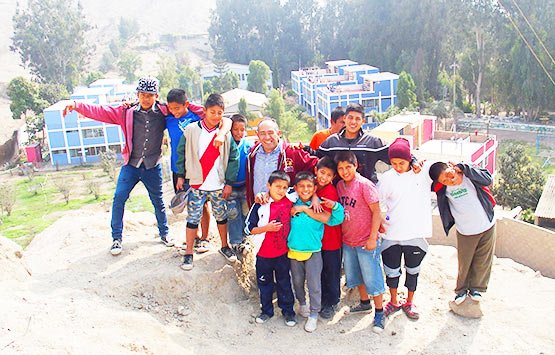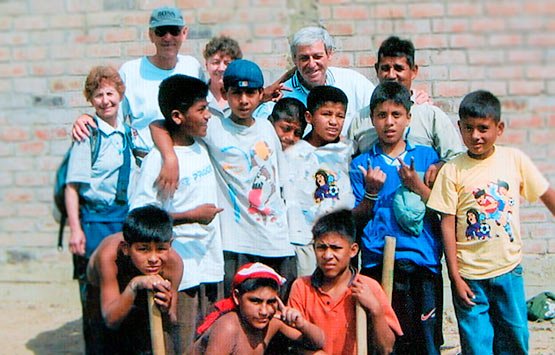The project is aimed at boys aged 8 to 17 who live on the streets or are at high risk and in need of rehabilitation.
The profile of the children and adolescents housed at CIMA has evolved since its inception.
Initially, CIMA exclusively cared for street children who had become detached from their families due to socio-economic crises within them and/or because of the physical or moral abuse they suffered. Living on the streets, they were exposed to numerous dangers that compromised their physical and moral integrity and hindered their normal development. They generally exhibited severe self-care and self-esteem issues.


Gradually, this population has been replaced by children at high psychosocial risk. Many of them come from dysfunctional (separated couples) or disjointed families (no fixed home for the child) but still maintain contact with their families. Generally, the children escape from parental authority and develop behaviors that put them at psychosocial risk: staying on the streets, school dropout, gang involvement, gambling problems, Internet addiction, and drug use. The children are characterized, above all, by a rejection of discipline and behavioral problems.
Most of the children come from families that lack the economic resources to meet their needs (limited access to basic health and education services) and struggle to fulfill the dual role of work and childcare. Many also grow up in a family environment where relational patterns develop that tend towards emotional indifference, irresponsibility in roles and functions, domestic violence, child abuse, and alcohol and drug abuse.
The children and adolescents who arrive at CIMA often suffer from psychological trauma that manifests as low self-esteem and behavioral problems (indiscipline, chaotic lifestyles, aggressiveness, distrust of adults), health problems (malnutrition, skin problems due to lack of hygiene, venereal diseases), low educational levels, and inappropriate behavior patterns (loss of values).
General Objectives:
- Proporcionar una casa hogar abierta a los niños y adolescentes que viven en las calles o están en situación de alto riesgo psicosocial, debido a situaciones de crisis socio-económicas familiares.
- Brindar una atención integral a los niños y adolescentes para satisfacer sus necesidades básicas de afecto, vivienda, alimento, vestido, salud física y mental, educación, con el fin de lograr la superación de sus problemas.
- Facilitar el desarrollo personal e integral (físico, emocional, intelectual, moral y espiritual) de los niños y adolescentes .
- Reinsertar a los niños y adolescentes en su familia, cuando es posible.
- Brindar un seguimiento a los niños y adolescentes reinsertados en su familia para evitar que los problemas se repitan.
Specific Objectives:
- Integrar a los niños y a los adolescentes a la vida de la casa hogar haciéndoles participar en tareas domésticas: limpieza, preparación de alimentos, lavado de ollas y de su ropa entre otros.
- Interrelacionar a los niños y los adolescentes a través de actividades deportivas, recreacionales y artísticas.
- Ofrecer a los niños y adolescentes que participen de su propia formación, desarrollando programas de aprendizaje ocupacional (talleres).
- Reinsertar a los niños y adolescentes en el sistema educativo y brindarles capacitación técnica que les permita desarrollarse en forma autónoma en su vida adulta.
- Desarrollar el trabajo de seguimiento con las familias para que asumen su rol y su responsabilidad.
